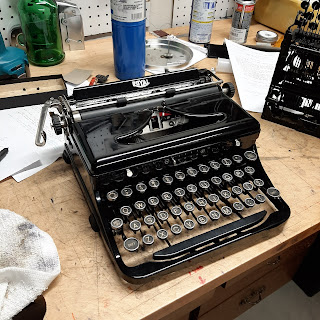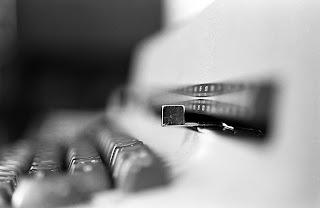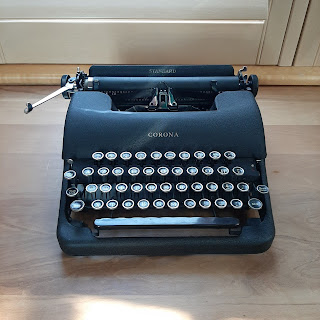Building a Royal O model

Mostly complete. Time to install the body It is not an uncommon occurrence in the world of typewriter repair to be given a selection of parts and be asked to create a whole machine. This month it has happened twice. Since I love royals, I though I'd give a short overview in the work that is involved in such a project. Dirty Dirty One of the parts machines The two subjects in question were two Royal Os in gloss black, the first of which was missing all feet, the spacebar, the entire constitution of the carriage besides the frame, and had (as I discovered) a bent rack. The bent rack caused the carriage to bind on the escapement pawl. The second O was missing the carriage entirely, which was situated off to the side in a heap. It was also missing the bell striker and the rear carriage rail, as well as the shift bearings. Post cleaning Really clean Picking and chosing. I actually had three options including the parts I picked from my own stock New QDL rollers installed. The 40

